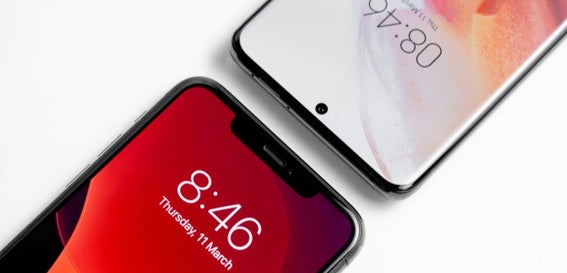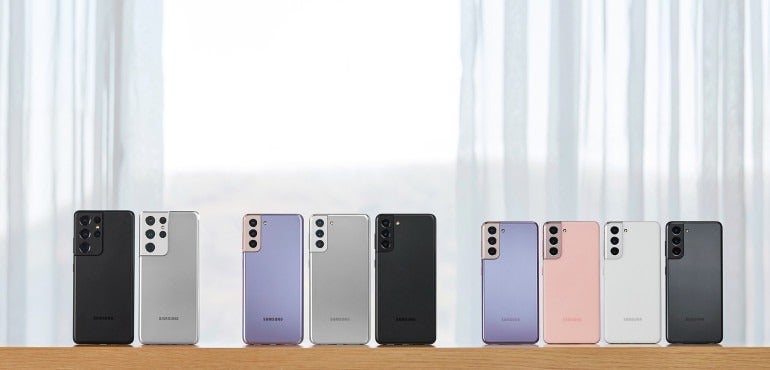What's a megapixel? Exactly what is 4K when it's at home? What's the shakedown on optical image stabilisation technology? If you're not sure, don't worry.
In this guide we unpack baffling cameraphone jargon with simple-to-understand, breezy definitions that really put you in the picture.
4K
This is currently the highest resolution at which a smartphone can shoot video.
4K resolution is generally 3840 x 2160 pixels – around four times that of 1080p full HD.
The resulting videos boast huge levels of detail and sharpness when viewed on a suitable monitor or TV.
4K requires relatively large amounts of storage and processing power, which is why it’s generally reserved for the top tier of smartphones.
720p
The lowest resolution (1280 x 720 pixels) that is considered high- definition.
720p video uses less storage space than 1080p video while still offering decent levels of detail.
1080p/Full HD
Video captured at a resolution of 1920 x 1080 pixels is called either 1080p or Full HD.
1080p offers a lot more detail and sharpness than standard video. And unlike 4K you can view the footage you capture on most computer monitors and televisions.
Aperture/F-number (F1.8, F1.9, F2.0 etc.)
The aperture is the hole in the lens through which light passes before hitting the sensor. The F-number represents the hole’s diameter – the lower it is, the larger the diameter.
Large apertures let in more light, which boosts a camera's performance in low light conditions.
Back or rear-illuminated sensor
This is a type of image sensor that arranges the camera's internal elements so that more light hits the sensor.
It's particularly useful in low light photography and video.
Contrast

Contrast occurs when bright and dark areas, or areas of wildly different colour, closely converge.
Contrast is prized for giving images depth, richness and punch.
Dual LED/True Tone flash

First introduced by Apple but later adopted by other manufacturers, a dual tone LED flash can provide “warmer” light than traditional LED flashes.
This particularly improves portraits by making skin tone look more realistic.
Exposure
The amount of light captured by a camera’s sensor when a photo is taken.
Incorrectly exposed shots occur when either too much light hits the sensor (resulting in blown out 'overexposed' images that feel saturated with light) or too little (resulting in dark, gloomy underexposed images).
Focus Pixels (Apple)
Apple’s name for what experts call 'phase detection autofocus' technology, which is faster than standard autofocus. Brought in with the iPhone 6 and 6 Plus.
Geotagging
Using the information from its GPS receiver, a smartphone is able to embed photos and videos with precise location data.
This is called geotagging, and allows your phone, tablet or PC to later plot on a map precisely where you stood when you snapped a particular shot.
HDR (High Dynamic Range)

High Dynamic Range or HDR refers to images that offer a greater range of luminosity than standard digital camera shots.
The idea behind HDR is to create a photograph that offers good exposure in both the brighter and darker areas, thus looking more true-to-life than a “normal” photo.
Smartphone cameras typically create HDR photos by rapidly taking several shots of the same scene at different exposure settings, then combining them into one image.
Image sensor
Digital cameras have a rectangular sensor sitting behind their lens. When you press the shutter button, light falls onto this sensor and data is collected by millions of microscopic pixel sensors.
The camera then processes this data and creates a photograph, or a single frame of video.
iSight camera (Apple)

“iSight” is the name Apple uses for the rear-facing cameras on its iPhone, iPad and iPod touch models.
ISO
This refers to the sensitivity of the camera’s sensor, represented by a number and written, for the sake of example, thusly: 'ISO 3200'.
Most smartphone cameras have an adjustable ISO range: in gloomier conditions, increasing the ISO allows the camera to use faster shutter speeds – but high ISO images are grainier and less detailed than low ISO shots.
Laser autofocus
Debuted on the LG G3 but now available on several Android phones, laser autofocus uses rays of infrared light to gauge the distance from a camera to its subject or subjects, setting the focus distance accordingly.
It's generally faster than older autofocus methods, but not always substantially.
Live Photos (Apple)/Living Images (Nokia/Microsoft)
Available on Apple’s iPhone 6s and 6s Plus, Live Photos combine still images and video.
Basically, you can isolate part of the image and make it move while the remainder stays static.
Nokia and Microsoft incorporate a similar technology on Lumia phones called Living Images.
Luminosity
The amount of light that the human eye perceives an object to emit in a photograph.
Boosting luminosity (i.e. in HDR photography) can make areas of the picture that would ordinarily look flat to take on more detail, texture and depth.
Megapixels
A term used to gauge digital camera sensors’ resolutions, with one megapixel roughly equivalent to one million pixels.
Note that the amount of megapixels does not always reflect image quality.
This is because some sensors use fewer megapixels but make each megapixel physically larger and therefore more capable of capturing accurate image data, particularly in low light conditions.
Optical Image Stabilisation/OIS

When taking pictures, your hand’s movements can result in blurry photos.
Optical image stabilisation counteracts these movements by intelligently shifting the camera’s lens elements, leaving you with sharper images.
This is particularly handy in low light conditions where the camera’s shutter speed is slower.
RAW
Most cameras create compressed JPEGs, but some offer the option to shoot RAW images instead.
These take up far more storage space but retain all the data captured by the sensor, which allows a lot more scope for editing your snaps on your computer.
Resolution
The detail held by an image. Digital images are made up of many tiny coloured dots called pixels. The more pixels, the more detailed the image.
Shutter speed
The amount of time for which a camera’s shutter is open and letting light through to the sensor.
In darker conditions, longer shutter speeds are generally required – but that can result in blurry images if the phone isn’t held totally motionless.
Slo-mo/Slow Motion/High Frame Rate video
Capturing action at high frame rates then playing it back at normal, slower frame rates results in buttery-smooth slow motion videos that look exceptionally cool.
Now available on most high-end flagship smartphones.
Ultra HD
An alternative name for 4K video.
UltraPixel (HTC)
An HTC technology in which the camera sensor’s pixels are larger – twice the size of most smartphone camera pixels, in fact.
Large pixels generally improve performance in low light shooting situations.







